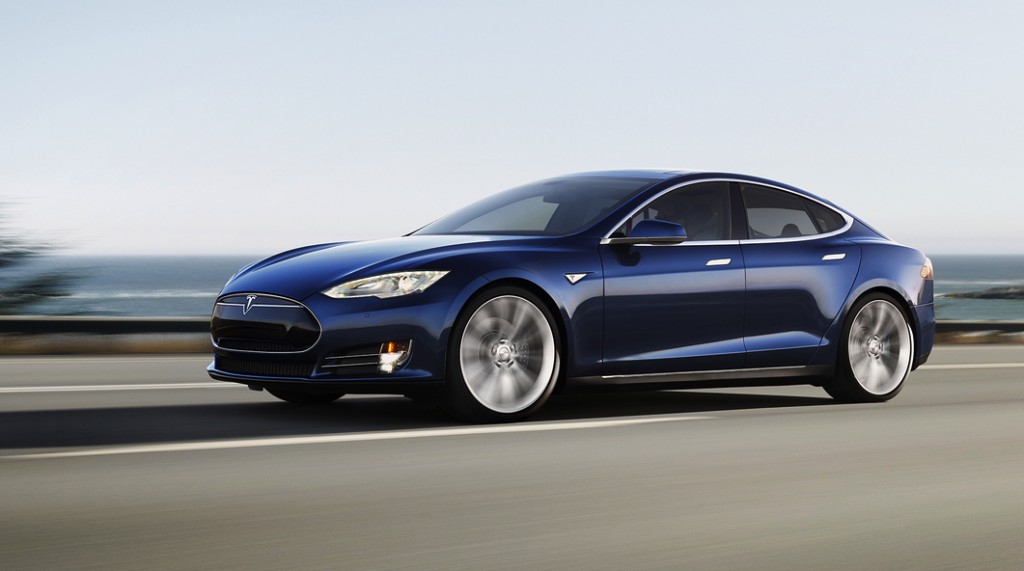Tasmania is uniquely placed to make a big impact globally in the battle for a stable climate, but it needs a minister to stand up and speak out. [25 August 2015 | Peter Boyer]
Blokes love all things that move, as we know. And the moving thing they love best is the car.
You could see that 10 days ago in the male-dominated audience at North Hobart’s State Cinema, where energy minister Matthew Groom launched the Tasmanian branch of the Australian Electric Vehicle Association.
The AEVA began in 1973, but Tasmania hasn’t had enough members for a local branch until this year, when writer-publisher Warren Boyles, planning consultant Clive Attwater and other Hobart-based enthusiasts began a push to put electric road transport on Tasmania’s public agenda.
Organisers of the launch event were surprised to see the auditorium packed to capacity, an indication that people are becoming aware that electric transportation is now a substantial global development that looms ever-larger in our future.
The Tasmanian AEVA’s inaugural chair, Penny Cocker – living proof that men can cope with a woman in charge – introduced the minister by noting that on average Tasmanians spend more on transport fuels than on household energy, amounting to over a billion dollars each year.
She also said that our spend on petrol is three to four times the cost of energy to run an electric car. That being so, a wholesale shift to electric transport would bring savings to the Tasmanian economy of many hundreds of millions of dollars a year.
Clive Attwater pointed out that his Nissan Leaf plug-in electric car, which has a maximum range of 160 km between charges, is most economical in low-speed, stop-start city traffic, making such vehicles ideal for urban use.
For those wanting to drive long distances he’s devised a $1 million network of charging stations to allow these vehicles to be driven all over all the island’s roads. At strategic locations, high-power stations would provide a full charge in 20 minutes.
Matthew Groom heard all this, and is no doubt aware that the Tasmanian Climate Change Office, Tas Networks, Hydro Tasmania and the RACT have been active in developing these ideas.
But he missed a long and spirited Q&A session at the end. It continued outside, in an adjacent laneway among a range of electric and hybrid cars from a Lexus hybrid and a shiny new Tesla Model S all the way down to Boyles’ low-cost converted mini-Daihatsu.
It’s taken me a while to see a positive role for private cars in the sustainability story. At this crunch time in our battle to contain climate change, I have to concede that sprawling cities aren’t going to give way any time soon to compact urban centres with space-age public transport.
With emission cuts now an urgent priority, the developed world needs people in big numbers getting behind strong action. Electric cars powered by renewable energy are shaping as a practical, and sexy, option with the potential to change how whole populations see and do things.
The all-electric US car-maker Tesla Motors has sparked people’s imagination in a business that always seemed immovably dependent on fossil fuel. Tasmania’s combination of natural beauty, social stability and carbon-free electricity makes it uniquely placed to take advantage of this.
The Renewable Energy Target could help us develop power generation to serve an expanding electric car fleet. Australia’s Clean Energy Council has assessed that more than $40 billion worth of investment and 15,200 jobs are available nationally under the scheme.
On a population basis Tasmania’s share of this investment would be about $900 million, which could do a lot to ramp up solar and wind power to drive a new generation of electric transport. But if this is to get anywhere, the Hodgman government has to put its full weight behind it.
Matthew Groom has a rare opportunity to stand up, speak up and make a mark in history. As energy minister he could be the harbinger of a new Tasmania, an important agent in a transformative shift that could make us a beacon for the world. It’s an opportunity he mustn’t let slip.
WILD FLICKS, a monthly film night on current environmental issues, starts at Wild Island Gallery, 33 Salamanca Place, Hobart, at 6 pm tomorrow with Chasing Ice, James Balog’s breathtaking documentary that uses time-lapse photography to capture Earth’s dramatically changing glaciers.

